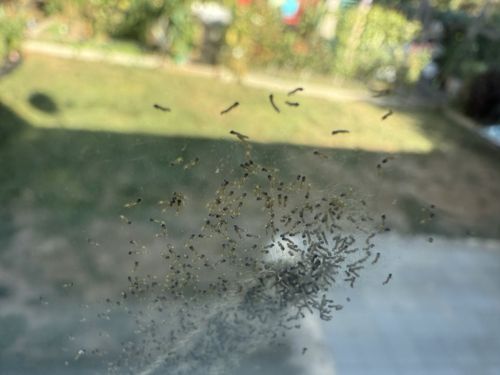Mosquito larvae and pupae (or similar Dipteran larvae/pupae)
Scientific Name: Culex (mosquito genus) or similar Diptera genera
Order & Family: Diptera (True Flies), Culicidae (Mosquitoes) or Chironomidae (Non-biting midges) or similar aquatic Diptera families
Size: Larvae typically 0.5-1 cm (0.2-0.4 inches) in length; Pupae are slightly smaller and comma-shaped.

Natural Habitat
Stagnant or slow-moving freshwater bodies such as ponds, puddles, ditches, containers holding water (e.g., buckets, old tires), and even temporary water collections.
Diet & Feeding
Larvae are filter feeders, consuming microscopic organisms (algae, bacteria, protozoa) and organic detritus in the water. Adults feed on nectar (both sexes), and adult females of many species feed on blood.
Behavior Patterns
Larvae (often called 'wigglers') hang upside down at the water surface, breathing through a siphon, and swim with a characteristic wiggling motion when disturbed. Pupae (often called 'tumblers') are comma-shaped, do not feed, and are highly agile, tumbling through the water to escape predators. They breathe through respiratory trumpets. This image shows a collection of these aquatic stages.
Risks & Benefits
Potential Risks: Mosquitoes, as adults, are significant vectors for numerous diseases including Malaria, Dengue fever, Zika virus, West Nile virus, and Chikungunya. A large presence of larvae indicates a potential future adult mosquito population. Potential Benefits: Larvae and pupae serve as a food source for aquatic invertebrates, fish, and amphibians. Adult mosquitoes, particularly males, are pollinators of some plant species.
Identified on: 9/12/2025